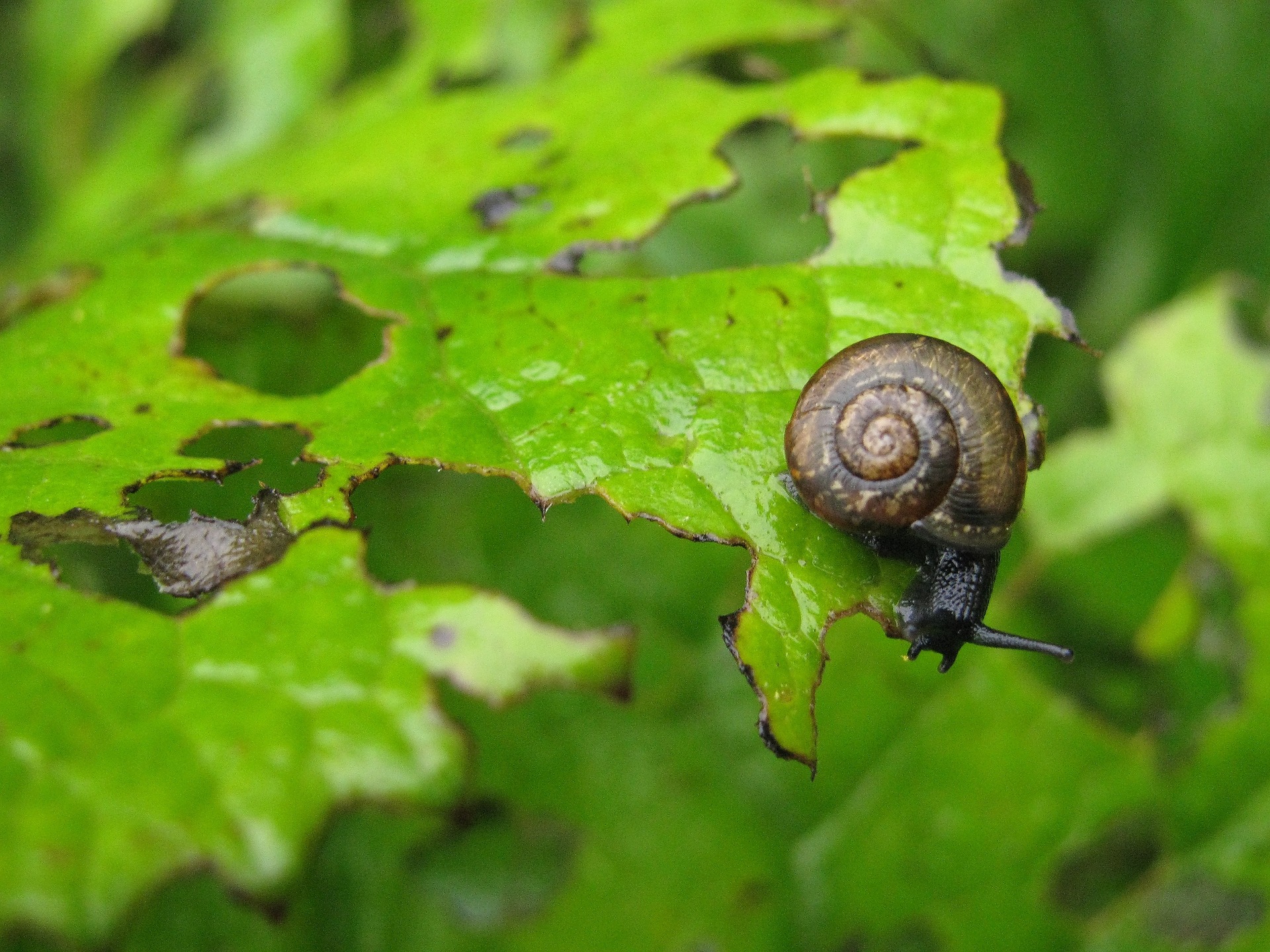
This time of year, you’re going to be seeing pests coming at you from all directions. Read on for some helpful, eco-friendly hacks to help you keep the damage to a minimum.
For squash, zucchini, or other garden plants afflicted by cutworms or borers, wrap a little aluminum foil around the plant’s stem tightly enough to keep the pests out.
Add two tablespoons of light cooking oil to every gallon of organic insect spray. This will help suffocate aphids and other insect pests that are hit with this spray. Note: Don’t spray oil mixes when it’s over 90 degrees outside, as this adversely affects plants.
If you find slugs in your garden munching holes in your favorite plants, set out some saucers of beer for them. It might feel like you’re rewarding the slugs for their bad behavior. Au contraire. The slugs get drunk and fall into the beer and drown. You might have to go outside twice a day and pick up the slugs that haven’t drowned and toss them in a bucket of soapy water. Also, at the end of the day, you might dump the beer out so you don’t invite hordes of drunken raccoons into your yard.
Japanese beetles can be knocked into a container of soapy water to kill them. Cover the Japanese beetles as they fall in because sometimes they fly away before they hit the water. If you have chickens, don’t add soap to the water – just collect the beetles, then pour the water and beetles into their water dish for them to snap up.
Deter slugs and snails by laying coffee grounds around your plants. You can also pour out the coffee you didn’t drink around your soil. Snails and slugs avoid caffeinated soil, and a 1 to 2 percent caffeine solution will kill them. (Instant coffee contains .5 percent caffeine; brewed coffee contains more.) Slugs hit with caffeine fall to “uncoordinated writhing” before they perish.
A third way to get slugs and snails is with chalk. Chalk pictures drawn on the sidewalk make slugs explode. Grab your kid’s sidewalk chalk, scribble all over a rock or a board, then put it under your hostas or cabbages where the slugs can crawl over it. Re-chalk everything each time it rains. Diatomaceous earth has the same effect on these and other critters.
Old milk, in a 50/50 mild/water blend, makes an effective fungicide for roses.
Charles Anctil, the late rosarian who I still miss, always sprayed his roses and plants with a blast of water from the hose to knock pests off the plants. It’s an organic way to clean up insects, and it doesn’t bother the plants.
If the cat keeps using your garden as a litter box, stick a bunch of plastic forks, tines up, in your garden. Or gather up a lot of pine cones and use them as mulch. The cats are not a fan of walking on pine cones.
If voles and mice keep devouring your flower bulbs underground, you have several options. Surround each bulb with grit as you plant them, as rodents don’t like digging through stones. Dig a trench, line it with chicken wire, lay the bulbs in it, wrap the chicken wire around them, then cover them with dirt. Or, place the bulb in a strawberry carton, place a second one on top, and plant them that way.
Have a kitchen shaker filled with diatomaceous earth. (Obviously, please do not leave this shaker in the kitchen.) Diatomaceous earth consists of millions of diatoms – microscopic, razor-edged remains of ancient sea organisms. Chalk is made of diatoms, which is why a chalk drawing will effectively kill a slug that slides across it. These diatoms cut through the slimy coat of slugs or the waxy coat of insects, causing them to dry out and die. At any rate, a kitchen shaker filled with DE can be shaken around hostas or other plants that are being attacked by pests, a nice and tidy way to distribute this pest killer.
Hang old CDs and DVDs in your fruit trees or strawberry patch to scare away birds and squirrels. Hang them so they dangle and twirl in the breeze. This also works with aluminum pie tins.

Five different forms of the same aphid.
Soft-bodied insects (aphids, caterpillars, etc.) can be cleaned up with soapy water pretty handily. I’ve had success in pouring a bucket of soapy water directly over the afflicted plant in cleaning up a number of these pests. The soapy water will need to be reapplied a few times to catch any pests that were hiding under a leaf or stem in the initial application.
On the other hand, birds are great pest control in the garden. One afternoon in the rose garden, I noticed a sparrow grabbing something off a rose with her bill and throwing it to the ground, and then she hopped down after it. It turned out to be a rose slug (i.e. a sawfly larvae), and she was picking them off the plant, throwing them down, then hopping down to eat them.
Set out bird baths for the birds to invite them into the garden to stay a while. Wren houses are also good to have (and I always love hearing the wrens singing when I go outside).

Getting the worm.
Put ripening fruit, such as apples and peaches, into ziplock bags and seal them around the stem as much as possible. This should help seal out bugs – and those damn squirrels!
Pinwheels in the garden help to deter critters! Just as long as your kids don’t pick them all up and carry them away to play with.
Ant control in the house: mix 2 tablespoons Borax, 1 cup warm water, and a half-cup of sugar until it’s dissolved. Dip cotton balls into the mixture, then set them in places that the ants frequent. They’ll sip up the sugar water and carry it back to the nest to feed to the other ants. The Borax slowly builds up in the systems of the ants to kill them off – and this includes the queen ant, who lays all of the eggs. Once she’s gone, that ant hill is history.

There’s always the old “catch ‘em in a barrel” trick.
An extreme solution to chasing off raccoons, rabbits, squirrels, etc.: Pee around your garden. Obviously, do this at night so the neighbors don’t call the police. Animals take this kind of territory-marking very seriously and should leave your stuff alone. This isn’t for the squeamish, but when raccoons keep getting into your sweet corn, sometimes you have to take strong measures!
If a pest infestation is particularly bad, cut the plant back drastically, then take the infested stems and leaves out of the garden to avoid re-infesting the plant. Then pour soapy water over what’s left of the plant to get any exposed pests. The plant will come back, and should be in much better shape for it.
